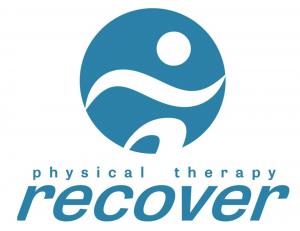The McKenzie Method: An Effective Approach to Spinal and Extremity Pain
The McKenzie Method continues to evolve, with ongoing research aimed at refining the assessment and treatment techniques.”
SLIDELL, LOUISIANA, UNITED STATES, June 3, 2024 /EINPresswire.com/ -- The McKenzie Method of Mechanical Diagnosis and Therapy (MDT) is a renowned approach to assessing and treating spinal and extremity pain. Developed by New Zealand Physiotherapist Robin McKenzie, this method has been utilized worldwide for over 30 years, demonstrating its efficacy in managing musculoskeletal conditions. Chaise Bennett, owner of Recover Physical Therapy in Slidell, Louisiana, highlights the benefits and principles of the McKenzie Method and its application in physical therapy.— Chaise Bennett
Overview of the McKenzie Method
The McKenzie Method is a comprehensive system of assessment, diagnosis, and treatment for musculoskeletal disorders. It focuses on empowering patients through education and active involvement in their treatment. The method is based on the principle that most musculoskeletal pain can be alleviated and prevented by learning how to perform specific exercises and movements.
Key Components of the McKenzie Method:
Assessment: A thorough evaluation of the patient's condition to identify the source of pain and determine the appropriate treatment plan.
Classification: Categorizing the patient's condition into specific syndromes to tailor the treatment approach.
Treatment: Utilizing specific exercises and movements designed to reduce pain and improve function.
Prevention: Educating patients on how to prevent recurrence of pain through self-management techniques.
Assessment and Classification
The assessment phase is crucial in the McKenzie Method. It involves a detailed history-taking and a series of movements and positions to identify the source of pain and classify the condition. This process helps to determine whether the pain is mechanical in nature and if it can be influenced by specific movements.
Three Main Syndromes in McKenzie Classification:
Derangement Syndrome: Pain caused by a mechanical obstruction within the joint, often resulting in a loss of movement and function. This is the most common syndrome and typically responds well to specific exercises.
Dysfunction Syndrome: Pain due to adaptive shortening and loss of mobility in soft tissues. This condition is characterized by consistent pain at the end range of movement and is treated with stretching exercises.
Postural Syndrome: Pain resulting from prolonged static positions that place stress on soft tissues. This condition is addressed through postural correction and education on proper ergonomics.
Treatment and Exercises
Once the assessment and classification are complete, a tailored treatment plan is developed. The McKenzie Method emphasizes self-treatment through specific exercises and movements that patients can perform at home. These exercises are designed to centralize pain, meaning to move pain from the extremities or outer regions of the body towards the spine, which is an indication of improvement.
Examples of McKenzie Exercises:
Extension Exercises: Commonly used for low back pain, these exercises involve repeated movements that extend the spine, helping to alleviate pressure on spinal discs.
Flexion Exercises: Used for conditions that benefit from spinal flexion, such as certain types of neck pain. These exercises involve movements that bend the spine forward.
Postural Correction: Educating patients on maintaining proper posture and ergonomics to prevent pain recurrence.
Benefits of the McKenzie Method
The McKenzie Method offers several advantages in the management of musculoskeletal pain:
Patient Empowerment: By teaching patients how to manage their pain through specific exercises and movements, the McKenzie Method promotes self-reliance and active participation in the recovery process.
Non-Invasive Treatment: The method emphasizes conservative, non-invasive treatment options, reducing the need for medications or surgery.
Effective Pain Management: Research and clinical experience have demonstrated the efficacy of the McKenzie Method in reducing pain and improving function in patients with spinal and extremity pain.
Application in Physical Therapy
At Recover Physical Therapy, the McKenzie Method is integrated into the treatment protocols for patients with musculoskeletal conditions. The approach aligns with the clinic's philosophy of providing patient-centered care that emphasizes education and self-management. Chaise Bennett, owner of Recover Physical Therapy, emphasizes the importance of a thorough assessment and individualized treatment plan in achieving optimal outcomes for patients.
Future Directions
"The McKenzie Method continues to evolve, with ongoing research aimed at refining the assessment and treatment techniques. The method's principles are being integrated into broader physical therapy practices, expanding its reach and impact. The emphasis on patient education and self-management aligns with current trends in healthcare that prioritize empowering individuals to take an active role in their health and wellness," states Bennett.
Conclusion
The McKenzie Method of Mechanical Diagnosis and Therapy offers a structured, effective approach to managing spinal and extremity pain. Its focus on patient empowerment, non-invasive treatment, and individualized care makes it a valuable tool in the field of physical therapy. By incorporating the McKenzie Method into treatment protocols, physical therapists can help patients achieve lasting relief and improved function.
For more information on the McKenzie Method and its application in physical therapy, contact Recover Physical Therapy in Slidell, Louisiana.
Morgan Thomas
Rhino Digital, LLC
+1 504-875-5036
email us here
Visit us on social media:
Facebook
Legal Disclaimer:
EIN Presswire provides this news content "as is" without warranty of any kind. We do not accept any responsibility or liability for the accuracy, content, images, videos, licenses, completeness, legality, or reliability of the information contained in this article. If you have any complaints or copyright issues related to this article, kindly contact the author above.


